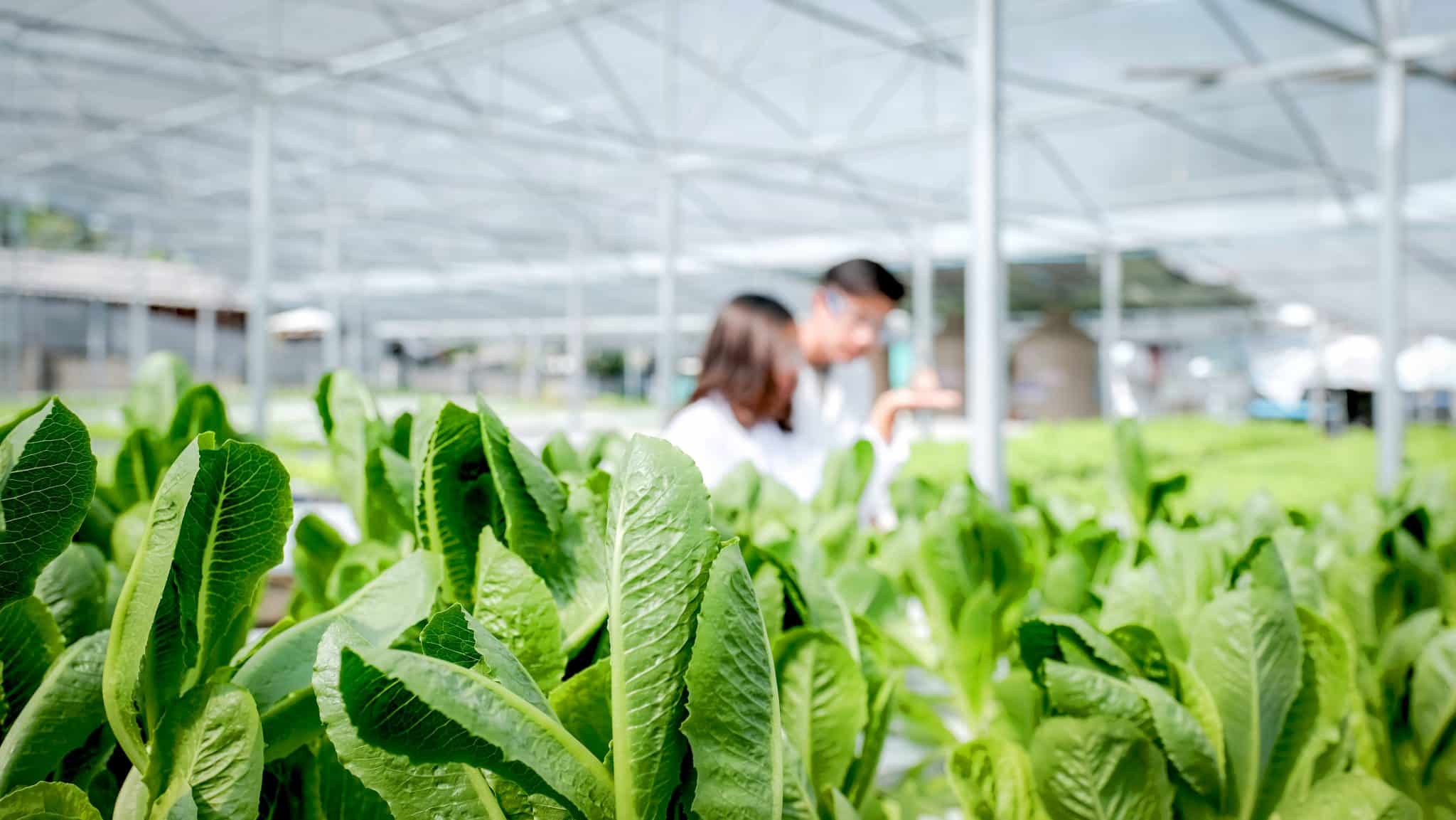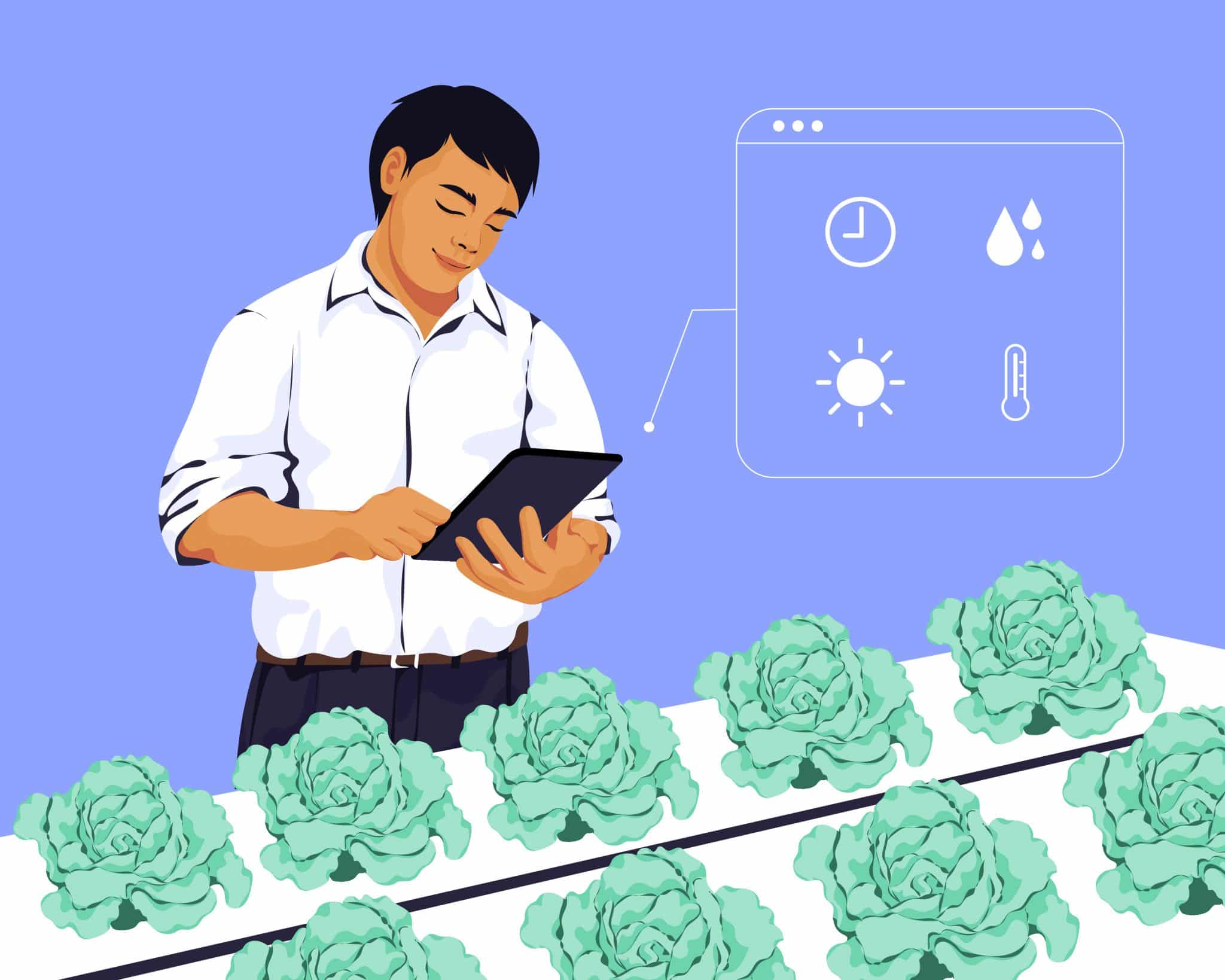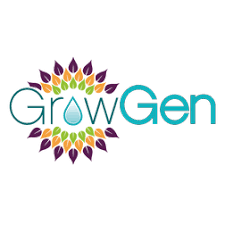Hydroponic systems come in various shapes and sizes, but they all have one common goal: to provide plants with the nutrients they need to grow. As a result, hydroponics is a wonderful way to garden indoors, and it also allows you to grow plants that wouldn’t normally be able to survive in your climate. This article will outline the different types of hydroponic systems and discuss how each one works. We will also provide examples of what you can grow with each system!
Types of Hydroponic Systems
In a general sense, all hydroponic systems operate on the same principle. Plants are grown in a nutrient rich solution rather than in soil. This solution is circulated through the system, delivering nutrients directly to the roots of the plants. However, there are several different types of hydroponic systems, each with their own advantages and disadvantages.
Drip System
In hydroponic drip systems, the nutrient solution is delivered directly to the plant’s roots via a tubing network. Then, the solution is slowly dripped into the growing medium surrounding the root system, ensuring the plants are watered and nourished.
With the drip system, there are two methods of circulation: recovery and nonrecovery. Recovery systems recycle the nutrient solution back into the reservoir for reuse, while nonrecovery systems discard the solution after each watering. While recovery systems are more efficient, they can be more complicated to set up and maintain as they require pumps and other equipment. On the other hand, nonrecovery systems, though they may seem wasteful, are easier to use as the growers can set precise intervals for watering.
Plants that flourish in this system include:
- Vegetables
- Flowers
- Spices
- Herbs
Drip irrigation is popular for vegetable gardens as well as flower gardens. The slow, steady watering is perfect for most plants.
Pros:
- Drip systems can grow a wide variety of plants.
- Drip systems are well-suited for large-scale operations as they allow for efficient watering of many plants at once.
- Drip systems can be used with various growing mediums, including soil, coco coir, and rock wool.
Cons:
- Drip systems can be a breeding ground for mold and other pathogens if not adequately maintained.
- These systems can be expensive to set up, especially if you use a recovery system.
- You will need to have a good understanding of your plant’s water needs to set up and maintain a hydroponic drip system properly.
This system offers a great way to grow a variety of plants as you can tailor your setup and flow rate to match your plant needs.
Wick System
The wick system is one of the simplest hydroponic systems as it doesn’t require aerators, pumps, or any electricity. With plants nestled in a grow medium, such as perlite or coco coir, a wick system uses capillary action to draw water and nutrients up from the reservoir and into the roots of the plants. The only moving parts in this system are the wicks!
As water and nutrients flow up the wick and saturate the growing media around the root system of plants, the air spaces in the media fill with oxygen. This allows the roots to breathe and prevents them from drowning in the nutrient solution.
Pros:
- The main advantage of the wick system is that it is very low maintenance. Once you have set it up, there isn’t much you need to do except ensure the reservoir is full of water and nutrients.
- Because there are no moving parts, the wick system is also very reliable. This passive system is an excellent option for those new to hydroponics or who don’t want to deal with the hassle of an active system.
- With no need for electricity, you don’t have to worry about pumps breaking down or aerators getting clogged.
Cons:
- The wick system is not suitable for large or heavy plants as the wicks may not be able to provide enough water and nutrients. This system also doesn’t work well with plants with high nutrient demand, such as tomatoes or cucumbers.
- Although this system is convenient, water and nutrients aren’t absorbed evenly. This could result in toxic mineral salts accumulating over time. If you choose to use this system, flush any leftover nutrients with fresh water every 1-2 weeks.
- Another drawback to this system is that it can only support a limited number of plants. The wicks can only transport a certain amount of water and nutrients, so if you try to grow too many plants in this system, they will all compete for resources, and none will thrive.
Overall, this hydroponic system is best suited for small, fast-growing plants that don’t require a lot of water or nutrients, such as lettuce or herbs.
Aeroponic System
Aeroponics may not seem like the most intuitive way to grow hydroponic plants, but it is a very efficient method. In an aeroponic system, plants are suspended in the air with their roots dangling and exposed to a nutrient rich mist. This mist is created by an aerator, which pumps water and nutrients from the reservoir up to the roots of the plants.
This atomization of the nutrient solution allows the roots to absorb a high concentration of nutrients. The mist is usually released from the top of the tower and falls down the chamber. Some aeroponics continuously mists the plant’s roots while others just periodically spray them. Because an aeroponic system doesn’t need substrate growing media, this exposure allows them to absorb oxygen and grow at an accelerated rate.
If you choose this grow method, try your hand with vine plants and nightshades such as:
- Tomatoes
- Bell peppers
- Eggplants
- Baby greens
- Herbs
- Strawberries
While you can grow most plants, root vegetables like carrots or potatoes will need a substrate to grow.
Pros:
- This system is compact and doesn’t require much space as an indoor garden. You can even grow plants vertically in an aeroponic system, which is perfect for small gardens or indoor spaces.
- Aeroponics is also a very eco-friendly hydroponics method as it minimizes the amount of water and nutrients wasted. Because the roots are constantly exposed to the nutrient solution, they can absorb what they need, and nothing goes to waste.
- This system is also very efficient regarding the time it takes for plants to grow. Because the roots are constantly exposed to oxygen and nutrients, they can produce accelerated yields.
Cons:
- Aeroponic systems can be costly to set up and maintain. The equipment required for this system, such as the aerator and pumps, can be expensive.
- This system also requires a lot of care and attention. Because the roots are constantly exposed to the air, they are more susceptible to drying out or damage.
- If your misters or pumps break down, your plants will quickly suffer. Because this system doesn’t have any growing media to support the roots, they will start to die within a day or two without water and nutrients.
Aeroponic systems are best suited for experienced hydroponic gardeners willing to put in the time and effort required to maintain this system.
Deep Water Culture System
A Deep Water Culture system (also known as a DWC system) is one of the most common and most straightforward types of hydroponic systems. In this system, plants are grown in a container of nutrient-rich water. The roots are submerged in the water, and oxygen is pumped into the water to aerate the roots.
Because the root system is continuously immersed in water, ensuring the plant’s roots are properly aerated is critical to its survival. It will drown if enough oxygen isn’t provided to the plant’s roots. To ensure proper water circulation, add an air stone with an air pump to consistently aerate the water.
Plants that do well in this system include:
- Herbs
- Spinach
- Kale
- Cabbage
- Broccoli
Most plants do well in a DWC system, but it is also ideal for large plants and extensive root systems.
Pros:
- This system is straightforward to set up and doesn’t require a lot of equipment.
- A DWC system is also very space efficient as it can be easily scaled to any size.
Cons:
- Smaller setups are prone to fluctuations in water temperature and pH.
- If the roots of the plants are not properly aerated, they will drown.
The DWC system is an excellent choice for beginner hydroponic gardening or those who want a simple system.
Nutrient Film Technique (NFT)
The Nutrient Film Technique is a type of recirculating hydroponic growing system that uses a thin film of water to deliver nutrients to the plant roots. In this system, plants are grown in long, shallow channels. The nutrients in the water run through the channels and over the plants’ roots. As a result, the tips of the roots will absorb moisture from the nutrient rich water, while the exposed root system will have free access to oxygen.
Water easily flows over the root tips due to grooves on the bottom of the channels. This also stops water from becoming stagnant and building up around root systems. A small pump recirculates the water through the channels, and an overflow drain prevents water from overflowing.
Plants that thrive in this system include:
- Lettuce
- Spinach
- Kale
- Strawberries
- Herbs
Generally, small root system plants do well in this system as they don’t need much space to grow. However, larger root systems are not as efficient in this system as they can block water flow and nutrients.
Pros:
- There is no need for hydroponic growing media as the roots are exposed to oxygen.
- With little to no runoff and recirculation, this system efficiently uses water and nutrients.
- This growing system is perfect for commercial growers who want to scale up their operations. It provides plenty of space for multiple plants, making it easier to get a high yield.
Cons:
- This system requires close attention to maintain the water level in the channels. If the water level drops too low, the roots will be exposed and dry out.
- If the water pump or overflow drain fails, the roots will be flooded and rot.
Overall, the NFT system is optimal for those who want to grow multiple plants. It is also well-suited for experienced hydroponic gardeners willing to put in the time to maintain this system.
Ebb and Flow (Flood and Drain) System
The Ebb and Flow system is another popular hydroponic system. In this system, plants are grown in a container of growing media, such as gravel or clay pellets. A reservoir of nutrient rich water is kept below the container, and a timer controls a pump that sends water up to the container. The water flows over the roots of the plants and then drains back into the reservoir. This process is repeated on a regular basis, typically every few hours.
To ensure that the roots are adequately aerated, an air stone is placed in the reservoir and connected to an air pump. The air stone will create bubbles in the water, oxygenating the roots.
Vegetation that does well in this system includes:
- Tomatoes
- Carrots
- Peas
- Peppers
- Flowers
- Herbs
Most plants will do well in this system if they are not too large. Plants with large root systems can block the flow of water and prevent it from draining properly.
Pros:
- This system is very versatile and easily customizable. It is also relatively easy to set up and maintain.
- With this system, you have the freedom to try different things with your plants and media until you find what grows best for you.
- Flood and drain systems accommodate most vegetation, making it a desirable choice for beginner gardeners.
Cons:
- This system relies on timers to control the pump, so if the power goes out, the plants will not get water.
- If the timer is not set correctly, the roots can dry out or drown.
- The setup for this system requires more space as you must account for the depth of the reservoir, container, and pump.
The Ebb and Flow system is a viable choice for those who want a versatile system that is easy to set up. It is also a great choice for experienced hydroponic gardeners who can ensure the timer is set correctly.
What’s the Best Hydroponic Method?
The answer to this question depends on what you are looking for in a hydroponic system. If you want a system that is easy to set up and maintain, the Ebb and Flow system is a smart choice. On the other hand, the Nutrient Film Technique is a good option if you want a system that can accommodate multiple plants.
However, if you’re not sure how much time you want to spend on maintenance, or if you want a foolproof system, the Deep Water Culture system is a good option. This system is quite easy to set up and maintain and is very forgiving if you make a mistake.
Other tips for choosing a hydroponic growing method:
- Think about the plants you want to grow. Some plants do better in certain systems than others.
- Research the different types of hydroponic systems and see which one interests you the most.
- Consider your budget and the amount of space you have to work with. Some systems are more expensive or require more space than others.
- Determine how much effort and time you are willing to put into maintaining your system. Some systems are more set and forget, while others need constant monitoring.
No matter which system you choose, you can be sure that you can grow healthy plants with a hydroponic system.
Hydroponic System FAQs
Where can I buy hydroponic supplies?
Grow Generation is your one-stop shop for all your hydroponic needs. With everything from grow lights to nutrients and growing media, you’re sure to find what you need. We have a hydroponic grow kit with every piece of equipment needed for the growing process, so you can get started right away. View our hydroponics supplies online or visit a store near you.
What is the best hydroponic system for a beginner?
The Deep Water Culture system is a good choice for those just starting with hydroponics. This system is very easy to set up and maintain and is very forgiving if you make a mistake.
What is the best nutrient solution for hydroponics?
The best nutrient solution will vary depending on the plants you are growing and the system you use. Some plants will require more or less of certain nutrients than others. Therefore, it is essential to research the specific plants you want to grow to determine what nutrients they will need.
You can also consult a hydroponic expert at Grow Generation to find the best solution for your system.
What are the benefits of hydroponics?
There are many benefits to growing plants with a hydroponic growing system. These systems are very efficient, so you can grow more plants in a smaller space. They also use less water than traditional gardening, and they can be set up to recycle the water used.
Hydroponic systems can also be customized to meet the specific needs of your plants. This means you can control the nutrients, pH, and temperature to create the perfect environment for your plants.
What are the disadvantages of hydroponics?
One of the main disadvantages of hydroponics is that it requires more initial setup than traditional gardening. You will need to purchase grow lights, nutrient solutions, and other supplies before you can get started. Hydroponic systems also require more maintenance than traditional gardening. You will need to monitor the system and ensure that the pH and nutrient levels are where they should be.
If you are unwilling to put in the extra effort, hydroponics may not be for you. But if you are willing to do the work, you will be rewarded with healthy plants and a bountiful harvest.
Shop Complete Hydroponic Systems for Beginners
There are many different hydroponic systems to choose from, and each has advantages and disadvantages. The best hydroponic system for you will depend on your specific needs and goals.
If you’re just starting with hydroponics, we recommend checking out one of the complete hydroponic systems for beginners available on our website. They come with everything you need to get started and are a terrific way to learn the basics of hydroponics. Get started today!







